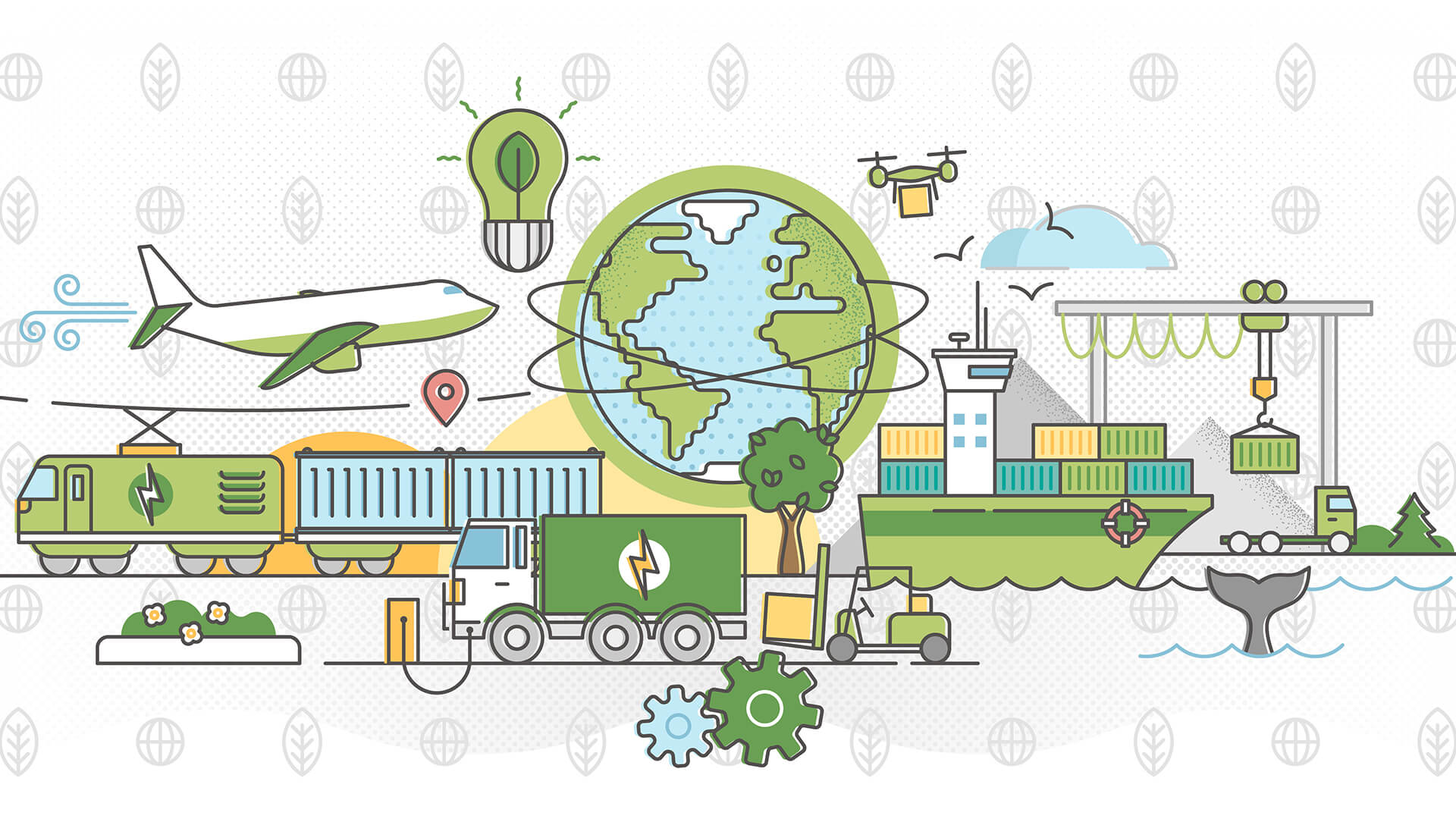Sustainability and Green Logistics: The Future of Responsible Supply Chains
The logistics industry has long been a major player in global commerce—but also a major contributor to pollution, waste, and carbon emissions. As climate concerns grow, businesses and consumers alike are demanding greener, more sustainable supply chains. Enter green logistics: a movement reshaping how goods are transported, stored, and delivered with minimal environmental impact.
From electric trucks to AI-driven route optimization, companies are finding innovative ways to cut emissions without sacrificing efficiency. But is it enough? And can sustainability truly go hand-in-hand with profitability?
Why Green Logistics Matters Now More Than Ever
The numbers don’t lie:
- Transportation accounts for nearly 24% of global CO₂ emissions, with freight being a significant contributor.
- E-commerce growth means more deliveries, more packaging, and more waste—Amazon alone shipped over 5 billion packages in 2022.
- Consumers are voting with their wallets—73% of global shoppers prefer eco-friendly brands, even if it costs more.
Regulations are tightening too. The EU’s Carbon Border Adjustment Mechanism (CBAM) and California’s Advanced Clean Fleets Rule are pushing companies to adopt cleaner logistics practices—or face penalties.
How Companies Are Going Green
1. Electrifying the Fleet
The shift from diesel to electric vehicles (EVs) is accelerating. Companies like Tesla, Volvo, and Rivian are rolling out heavy-duty electric trucks, while last-mile delivery vans (like Amazon’s Rivian fleet) are becoming a common sight in cities.
Challenge: Charging infrastructure and battery range still lag behind traditional trucks, but the gap is closing fast.
2. Smart Route Optimization
Why burn extra fuel in traffic? AI-powered logistics platforms (like OptimoRoute and Route4Me) analyze traffic, weather, and delivery windows to cut unnecessary miles.
Bonus: Fewer miles = lower costs + happier customers.
3. Sustainable Packaging
Excessive plastic and non-recyclable materials are out. Companies are now using:
- Biodegradable packing peanuts
- Reusable shipping containers (like Loop’s circular packaging system)
- Right-sized packaging (no more giant boxes for tiny items)
4. Carbon-Neutral Shipping Options
Many carriers now offer carbon offset programs, where emissions from shipments are balanced by investments in reforestation or renewable energy.
Example: DHL’s GoGreen program lets customers choose climate-neutral shipping.
5. Warehouse Efficiency
Green logistics isn’t just about transportation—warehouses are getting smarter too:
- Solar-powered fulfillment centers (Walmart and IKEA lead here)
- Automated storage systems that reduce energy waste
- LED lighting and smart HVAC systems to cut electricity use
The Business Case for Green Logistics
Some still see sustainability as a cost burden, but forward-thinking companies are proving it’s a competitive advantage:
- Cost savings – Fuel-efficient routes and energy-saving warehouses cut operational expenses.
- Brand loyalty – Eco-conscious consumers reward sustainable brands.
- Regulatory compliance – Staying ahead of green laws avoids future fines.
- Investor appeal – ESG (Environmental, Social, Governance) metrics now influence funding decisions.
Challenges Ahead
Despite progress, hurdles remain:
- High upfront costs – Electric trucks and green infrastructure require major investment.
- Supplier resistance – Not all partners are on board with sustainability yet.
- Consumer skepticism – Greenwashing accusations force companies to prove real impact.
What’s Next?
The future of logistics is undeniably green. Expect to see:
- Hydrogen-powered trucks gaining traction.
- Blockchain for transparent carbon tracking in supply chains.
- More regulations pushing companies toward net-zero goals.
Final Thoughts
Sustainability in logistics isn’t just a trend—it’s a necessity. Companies that adapt now will lead the industry tomorrow. Those that don’t? They’ll be left behind, both by regulators and eco-aware customers.
The question isn’t if green logistics will become the standard—it’s how fast businesses can make the shift.
What do you think? Can logistics truly go 100% green, or will cost and infrastructure always be barriers? Let’s discuss in the comments!

